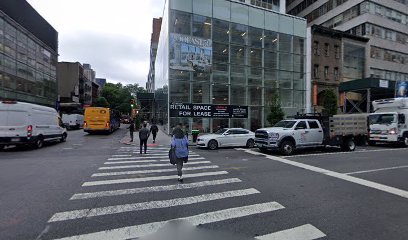By Joan Brown Wettingfeld
Bayside, then a village of Flushing, was fortunate to have a resident physician as early as 1690. Dr.John Rodman, a dedicated Quaker preacher as well, was an active member of Flushing's Quaker Meeting House which still stands. Dr. Rodman ministered to the medical needs of the local Indians as well asto the early settlers of the area. He was able to supplement his modest fees from his medical practice with the income from his farm, which was located near present day 35th Avenue and Bell Boulevard. Prior to the completion of the Meeting House in Flushing, Dr. Rodman's home served as the Quakers' meeting place.Though there is very little known about the details of early medicine in New York, there were Dutch, English and Huguenot doctors present from 1647 to 1652. Among them was Johannes La Montagne, a Huguenot, who had graduated from Leyden and had emigrated to New York in 1637. In 1641, because he was held in great esteem, he was asked to join the expedition to defend Fort Good Hope. Seven other physicians practiced in the colony from 1647 to 1652. In 1652 an ordinance was enacted which included this provision: “It was further then ordered that ship-barbers shall not be allowed to dress any wounds nor administer any potions on shore without the previous knowledge and special consent of the petitioners or at best of Dr. La Montagne.”Five years later New York passed the first law employing the doctor in the detection of crime. Under the English regulations concerning “chirugeons (surgeons), midwives and physicians” were included in the Duke of York's Code of 1665. This last edict was essentially the same as one enacted in Massachusetts in 1649.A graduate of the University of Utrecht in both medicine and theology, Samuel Megapolensis, was not only a pastor of a church in the Dutch colony but was also appointed when commissioners were selected to negotiate with the English when New Amsterdam became New York. An early surgeon was Jacob D. Commer (1660) and other early practitioners were Jan du Perth and a Dr. Hughes. Seven physicians but 30 “chirurgeons,” or barber “chirurgeons,” were given “small burgher rights” in New York City comparable to those given to chimney sweeps, butchers, bakers and vintners.Most medical men gravitated, however, toward the merchant class, officials and the landed gentry.On Long Island in 1677 one Jonas Wood was licensed to practice by the court of assizes of Huntington.Some 14 years later, John Stuart assured the town of Hempstead (then part of Queens) that he could not make a living from practicing medicine with the low fees paid to him and he petitioned the proprietors and freeholders of the town requesting 18 to 20 acres to be willing to settle among them and practice the “art of surgery.” There is no record of whether his request was granted.With no hospitals, the municipality of New York in 1689 paid physicians treating the poor. Recordsshow five pounds was the usual yearly fee for such service. By 1714 discussions centered around constructing almshouses instead, but the decision was made to pay for the care of the poor in privatehomes.Dr. John Bard (1716-1799) was famous for participating as a partner in one of the first dissections in the United States for the purpose of instruction. He had at the age of 15 been apprenticed to an English surgeon in Philadelphia, who subjected him to menial tasks while he studied medicine for seven years. However, good fortune enabled him to meet Benjamin Franklin and promoted a friendship that lasted a lifetime. He was later to assist the well-known Dr. Peter Middleton, a founder of the medical department of King's College (now Columbia) in the first recorded dissection (1750). The revolution eradicated thewealth he had accumulated and after retiring he returned to his practice in 1783. When the Medical Society of the state of New York was organized in 1789, Dr. Bard was unanimously elected its firstpresident.The post Revolutionary era was to be subject to epidemics such as cholera, yellow fever and smallpox, that were to influence the progress of our medical history. But that story must wait to be told.Joan Brown Wettingfeld is a historian and free-lance writer.






























